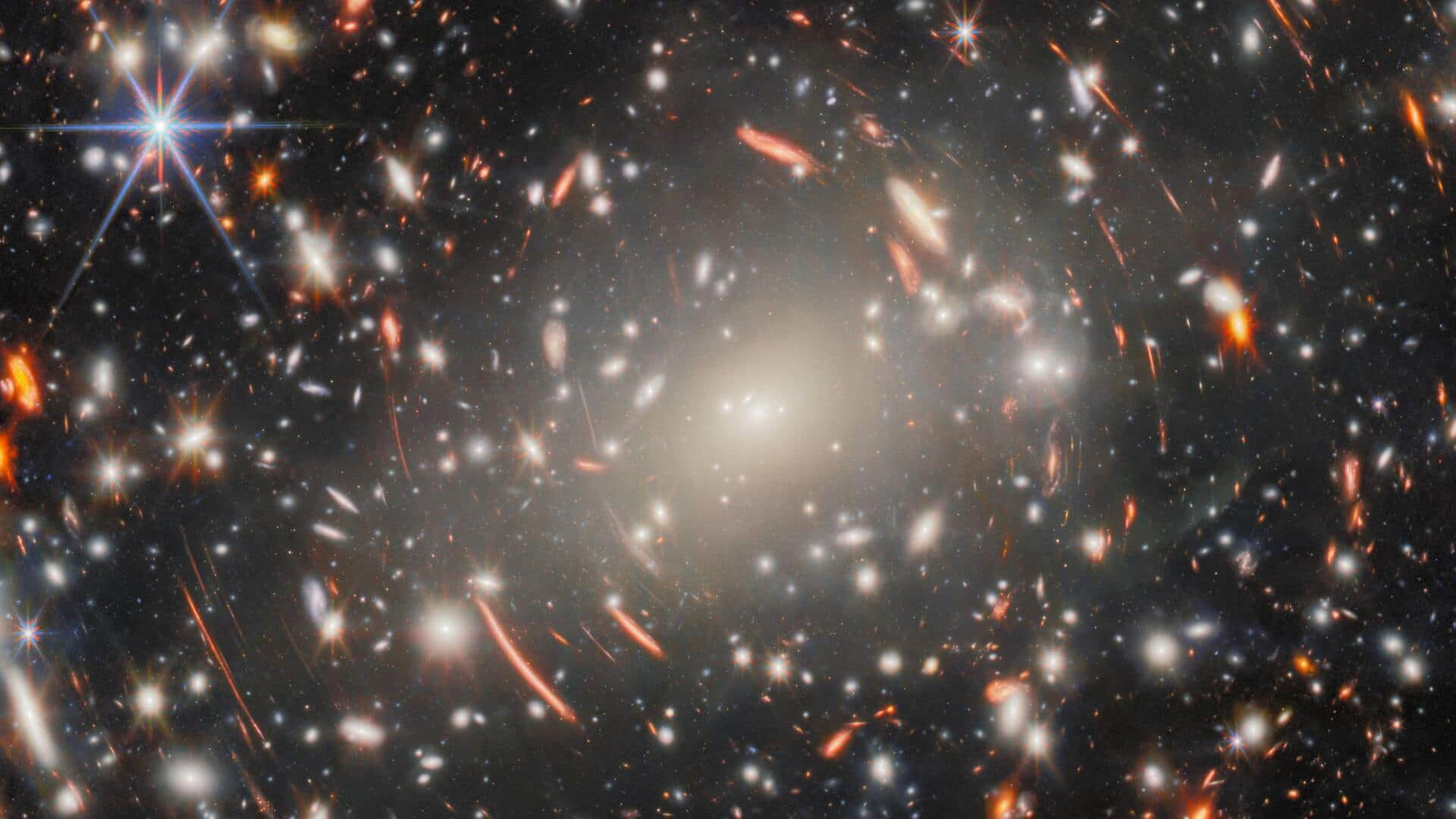
JWST's deepest image yet reveals universe's ancient light
What's the story
The James Webb Space Telescope (JWST) has captured its deepest image of a single target yet, the European Space Agency (ESA) announced. The stunning photograph took over 120 hours to capture, making it the longest time JWST has ever spent focusing on one object. The image shows a cluster of galaxies known as Abell S1063, located 4.5 billion light-years away from Earth.
Gravitational lens
Abell S1063: A cosmic lens
The ESA explained that massive celestial objects like Abell S1063 can bend light from objects behind them, creating a gravitational lens. This effect is what makes the "warped arcs" seen in the image so interesting to scientists. These arcs are actually galaxies from the universe's distant past, giving us a glimpse into how they looked billions of years ago.
Early universe
Unraveling the cosmic dawn
The image captured by JWST is a composite of nine separate shots taken at different near-infrared wavelengths of light. This technique allows scientists to look back in time and study how the first galaxies formed during the Cosmic Dawn, when the universe was just a few hundred million years old. Since its launch in 2022, JWST has revolutionized our understanding of the cosmos and revealed that early galaxies were much larger than previously thought.